According to the Seward Independent-Democrat newspaper (June 5, 1913), when the head of the parade reached Cottage Hotel, just north of the bridge, a halt was made. The marchers opened ranks and the old soldiers, members of the Ladies Circle, and the flag bearers marched down between the two lines of school children. The children waved small flags as the old soldiers passed by.
A brief program lead by Mayor Calder was held at the bridge where members of the Ladies Circle spoke about “The New Patriotism” and a number of selections were read by children. At the program’s conclusion, the old soldiers and members of the circle were taken by automobile to the North Cemetery where the graves of fallen comrades were decorated. Many citizens joined in the procession. After the exercises at the North Cemetery, they also went to Greenwood Cemetery where a similar service was held.
In the afternoon, members of the Seward G.A.R. led a program at the opera house, which included an invocation by Rev. Rohrbaugh, music by a large choir, and Lincoln’s Gettysburg address read by F.G. Simmons. J.W. Gladwish read a list of soldiers interred in the Seward cemeteries. Senator J.H. Kemp of Fullerton spoke for thirty minutes on the early struggles of the country and the history leading up to the Civil War. Eleanor Cross, a nine-year-old girl from Utica, contributed the following:
The sun is shining bright
With the morning light
I have a word to say upon this holiday –
God bless the soldiers brave
Who helped to free the slaves.
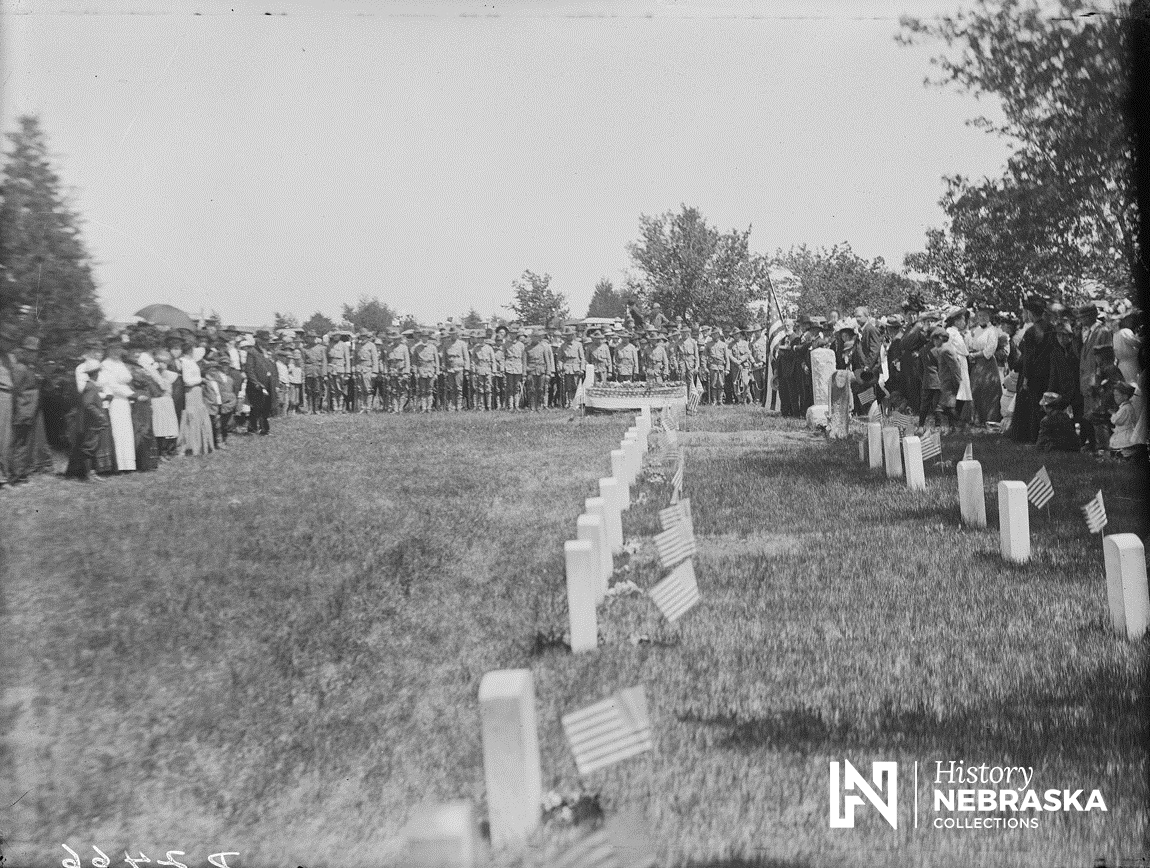
Decoration Day, Kearney, 1910. (RG2608.PH0-002466)
Did you know Memorial Day was originally called Decoration Day?
The tradition of decorating soldiers’ graves became popular after the Civil War. On May 5, 1868, in Waterloo, New York, General John Logan, the commander-in-chief of the Grand Army of the Republic (GAR), issued a proclamation that Decoration Day should be observed nationwide. The date May 30 was chosen because it was not an anniversary of a Civil War battle.
The first time the holiday was referred to as Memorial Day was in 1882, but it was not until after World War II that Decoration Day was more commonly referred to as Memorial Day. It became an official Federal holiday in 1967. The Uniform Holiday Bill, passed by Congress on June 28, 1968, changed the date of Memorial Day from the traditional May 30 to the last Monday in May to create a convenient three-day weekend. The law took effect on a federal level in 1971.
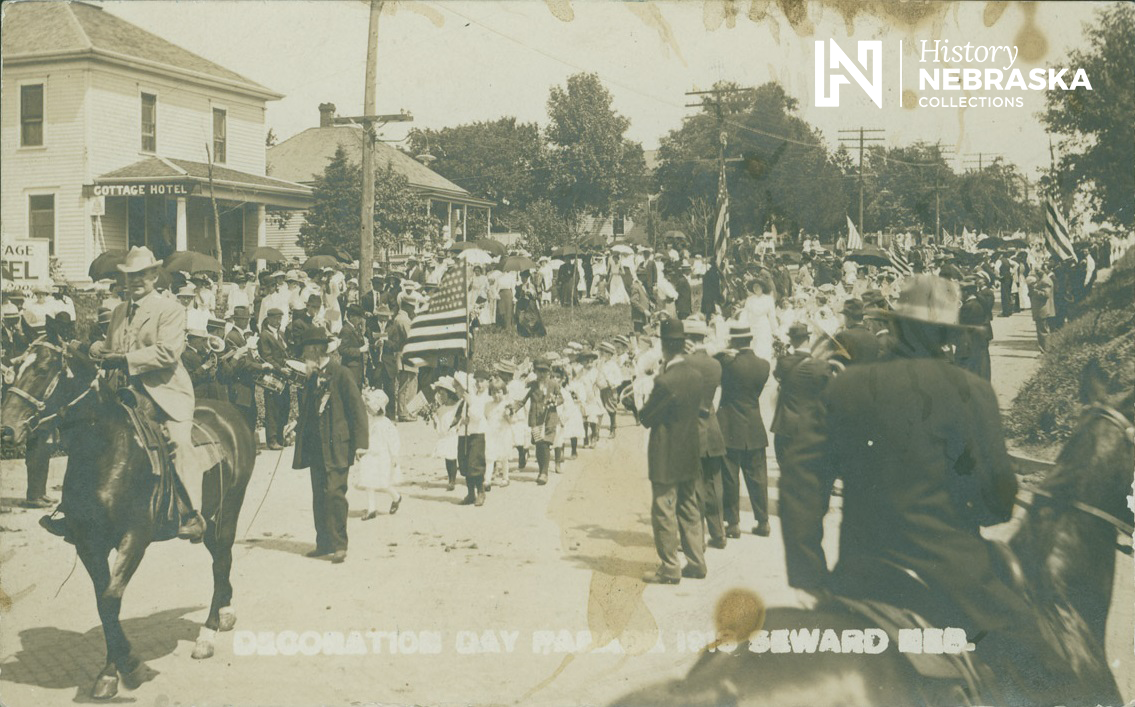
School children carry flags and flowers to honor the old soldiers. Decoration Day Parade, 1913 (Seward, NE) (RG2536.PH5-116)
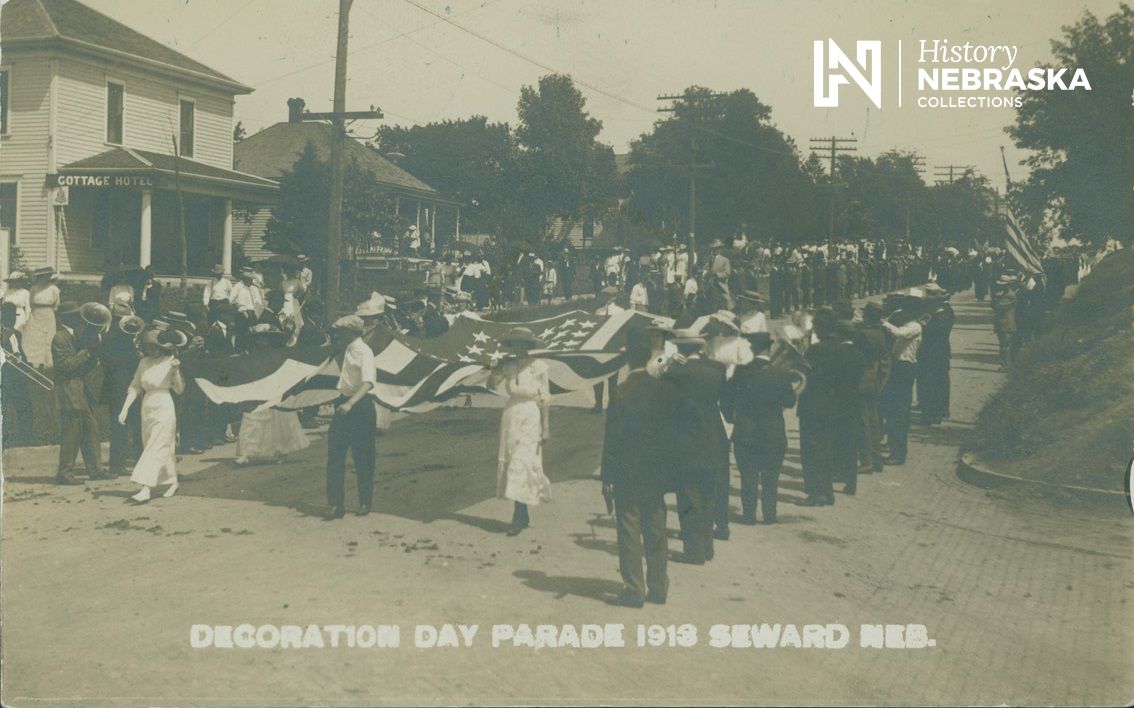
Members of the Seward High School graduating class carry a large American flag at the end of the parade. Decoration Day Parade, 1913 (Seward, NE). (RG2536.PH5-148).
The photographs featured in this blog capture the Decoration Day celebration held in Seward, Nebraska, in 1913. The parade began at 10:00 a.m. and marched to the river bridge near the Burlington Station. At the bridge, flowers were strewn upon the waters. Participating in the parade were students and the band from Concordia College, firemen, and school children as well as old soldiers and members of the Ladies Circle. Dr. J.S. Anderson (assisted by George Soss) acted as marshal of the parade.
The old soldiers and members of the Ladies Circle were immediately preceded by the nine members of the graduating class of Seward High School carrying a large American flag.
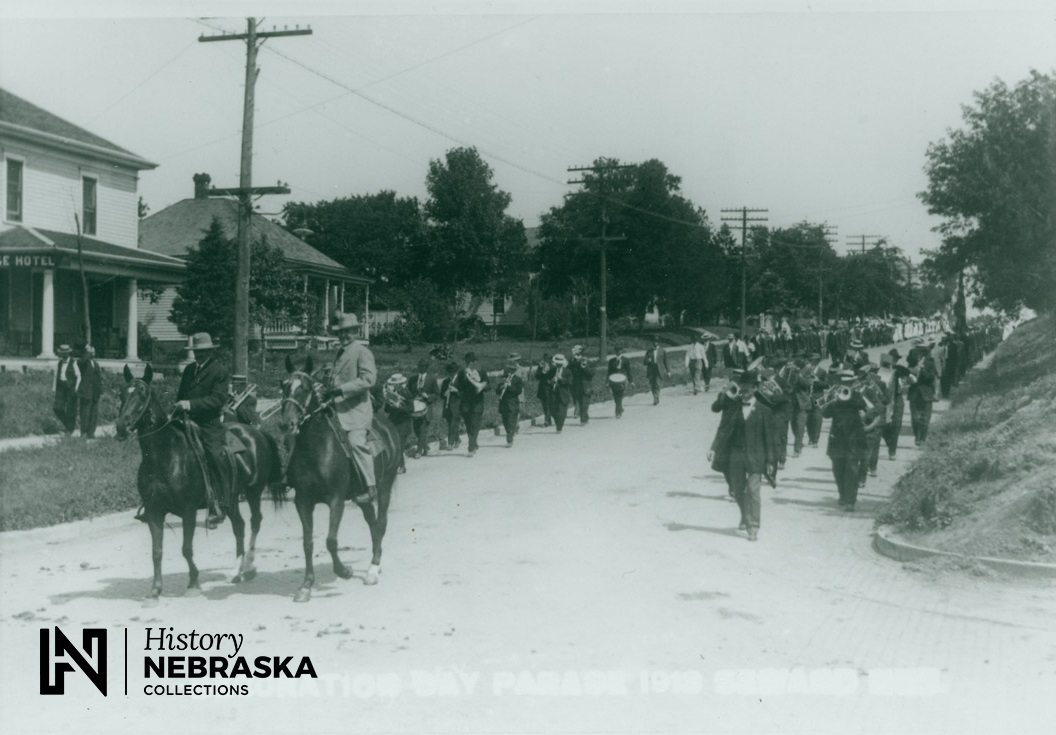
The college band splits into two columns to allows the old soldiers to pass. Decoration Day Parade, 1913 (Seward, NE) (RG2536.PH5-117).
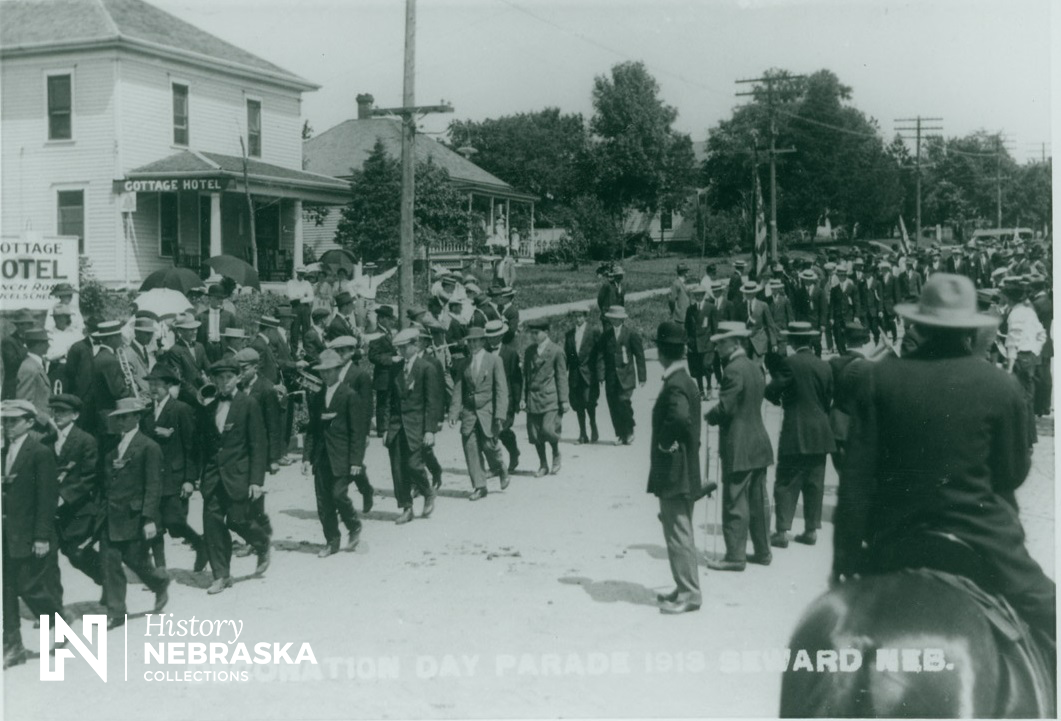
Decoration Day Parade, 1913 (Seward, NE) (RG2536.PH5-115)



